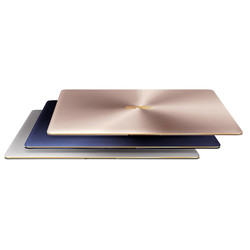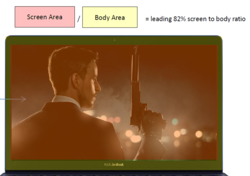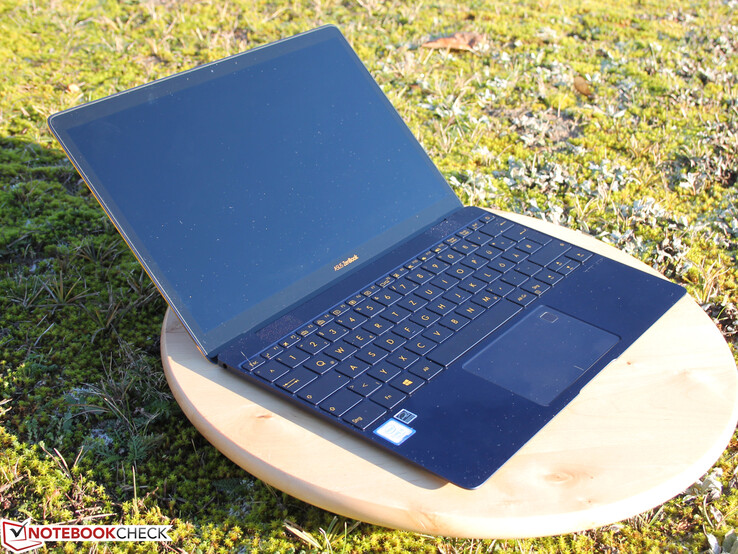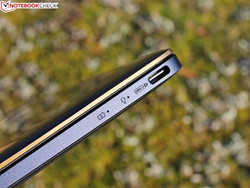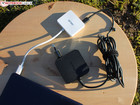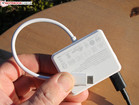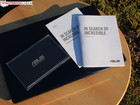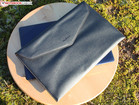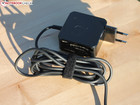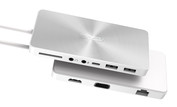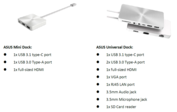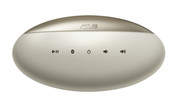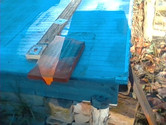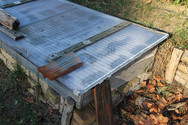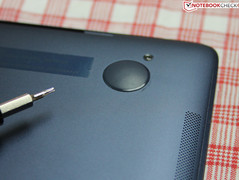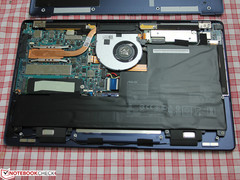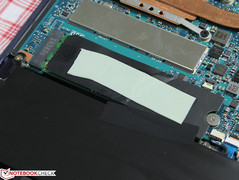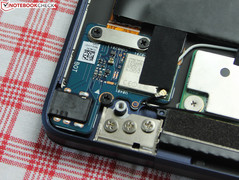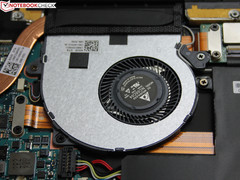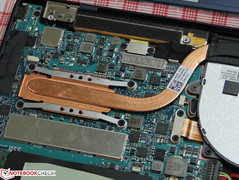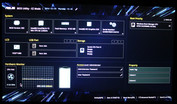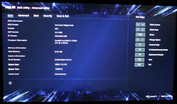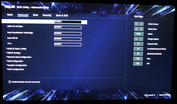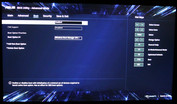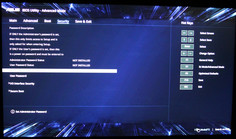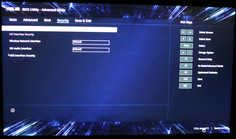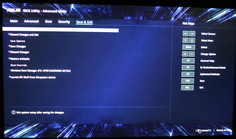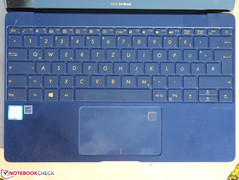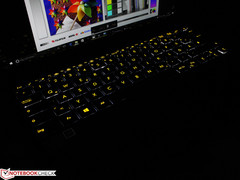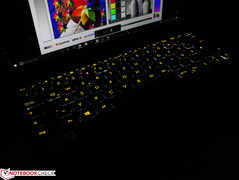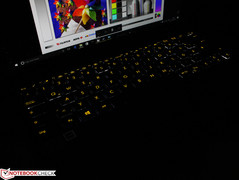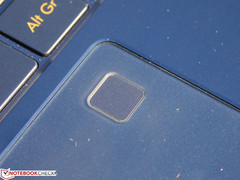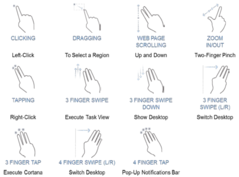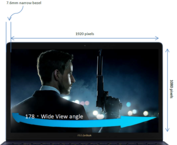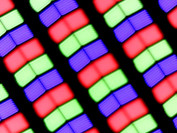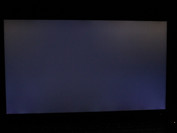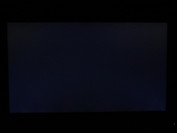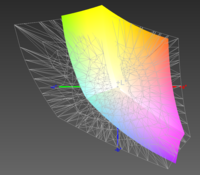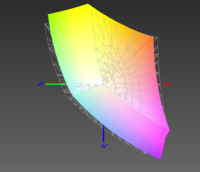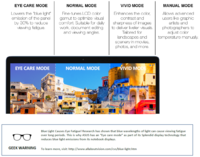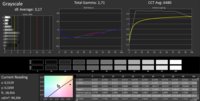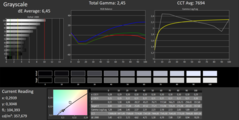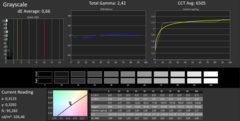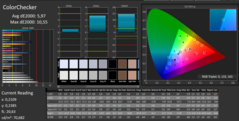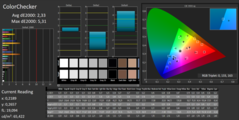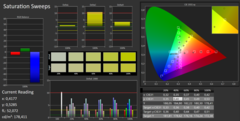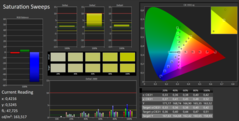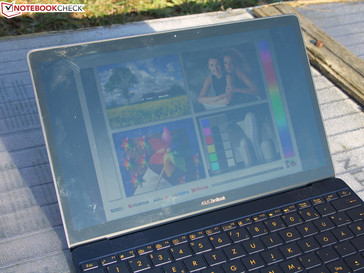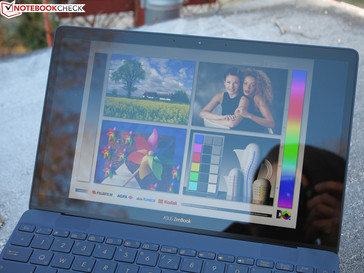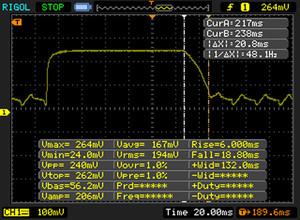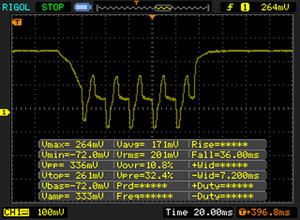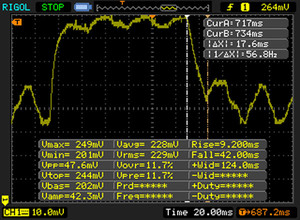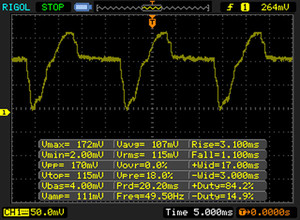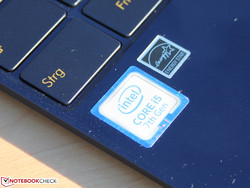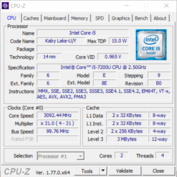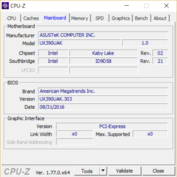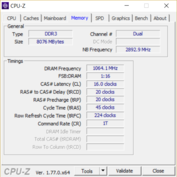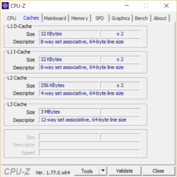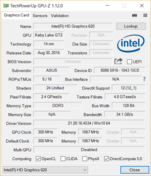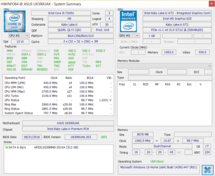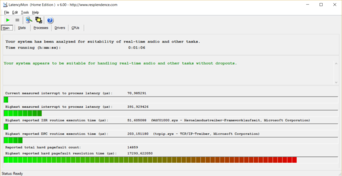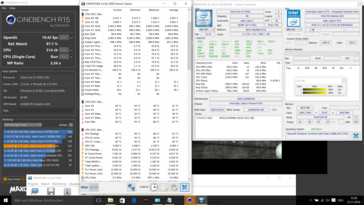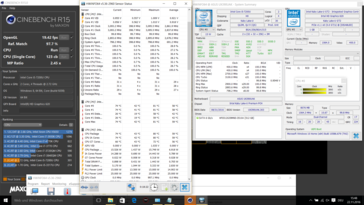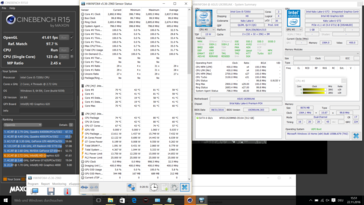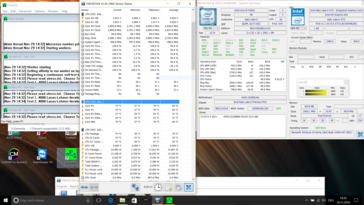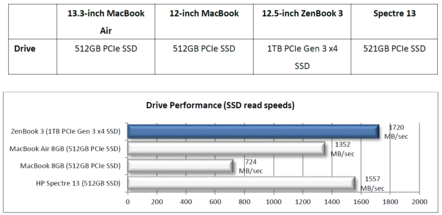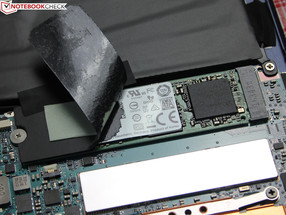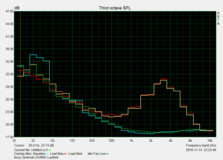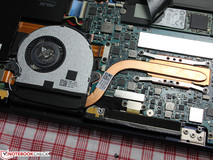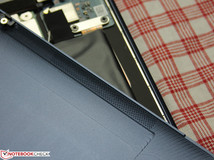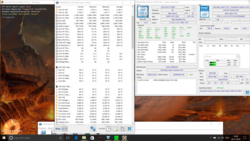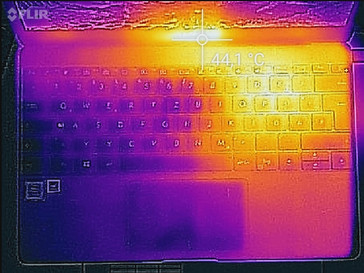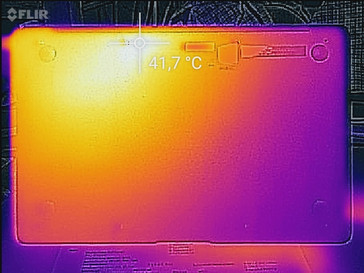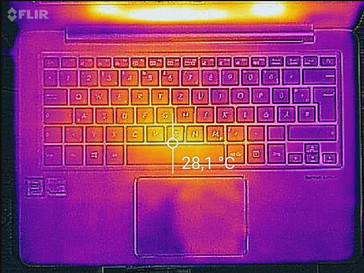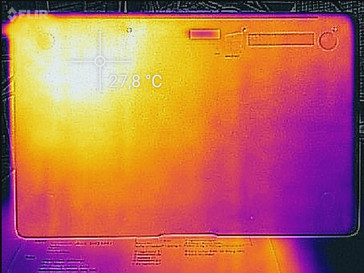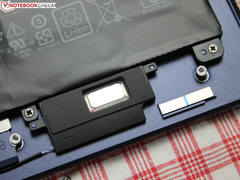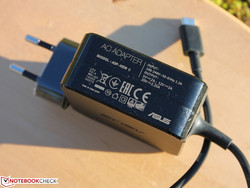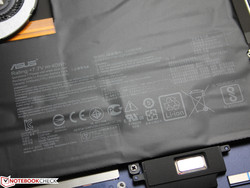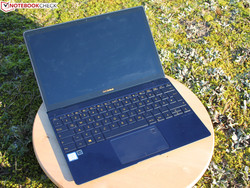Asus ZenBook 3 UX390UA-GS041T Notebook Review

For the original German review, see here.
"The world’s most prestigious laptop with unprecedented performance." – This is the slogan from the manufacturer about its extremely thin mini-subnotebook. The goal is to become one of the best systems among the thinnest, lightest and most beautiful Windows devices. The clear direction for this project was: Asus wants to offer the lightest, thinnest, yet still most powerful model in this segment.
This requires some sacrifices, in this case the ports. We can only find USB Type-C and a headset port at the thin sides. This is not necessarily a problem though: Apple's MacBook 12 is also limited to these two ports and Asus can most likely only dream about its sales numbers. We will find out whether the ZenBook 3 UX390UA is a success.
The competition from Apple, HP, Dell, and Acer should be warned, because the thin ZenBook puts up some impressive specs:
- thin bezels similar to the Dell XPS 13
- 11.9 millimeters thin and a weight of 914 grams
- audio with four speakers
- 1000:1 contrast ratio
- Kaby Lake Core-i performance with active cooling
- full-size keyboard with key travel
- glass touchpad with handwriting recognition
- login via fingerprint and Windows Hello
A look at our Top 10 ranking for subnotebooks does – among others – show these competitors:
At the top of the list is Apple's MacBook 12, and it is a good comparison device for the 12.5-inch ZenBook. However, the Apple is equipped with a Core m, which should easily be beaten by the UX390. Dell’s XPS 13 9360 with the brand-new Kaby Lake chip is on the list as well. The performance should be similar and it is also available in a (less expensive) Full HD version. HP also put some effort into the EliteBook Folio G1 to create the lightest subnotebook. 979 grams is only a tad heavier than our ZenBook, but the EliteBook only uses Core m CPUs. The Razer Blade Stealth, Aspire S 13 and Spectre 13 did not make our Top 10, but they are still rivals for the UX390. We will also use them for our comparison tables.
The HP Spectre is just 10 millimeters thin; our ZenBook is 12 mm thin. Razer’s Blade Stealth is a bit heavier at 1.3 kilograms, but it is still very thin at 13 millimeters and quite powerful thanks to its Kaby Lake Core i7.
Acer’s Aspire S 13 S5-371 has a similar weight of 1.3 kilograms, and it is – similar to the XPS 13 – about 15 mm thick. One positive aspect is the comparatively low price of about 1,000 Euros (~$1064), so we want to mention it as well.
Case
The new chassis with the golden edges is not only a visual highlight, it was also completely redesigned to enable the height of just 12 millimeters according to Asus. Besides the color Royal Blue, which is our test model, Asus also sells the ZenBook in Rose Gold and Quartz Gray.
The construction reminds us of the fanless ZenBook UX305CA (Core m), which was not much higher at 12.3 millimeters, but it was heavier at 1.2 kilograms. The latter is similar to the Yoga sibling ZenBook UX360UA, which is 14 millimeters thick.
However, there is a big difference compared to the UX305CA – and Asus is referring to the new construction: The base is not made of aluminum anymore, but an aluminum-magnesium alloy. We cannot check Asus’ claim about “6013 aerospace quality”, but the metal is supposed to be lighter than other alloys and at the same time still 50% sturdier. The case is not perfectly rigid and torsion-resistant though; concentrated pressure on the palm rest or the bottom will warp the chassis.
We can still commend the stability: Despite a certain amount of flexibility, which is noticeable when you carry the system around, the base unit is very sturdy for such a thin construction. It is no problem to lift the system at the corners of the base and the display. The display stability is provided by an aluminum shell as well as the thin Gorilla Glass 4 coating (0.4 mm). This was probably necessary for the stability, because the thin bezels are only 7.7 millimeters wide. The ratio between the screen and the chassis is 82% according to Asus.
One possible problem with very light subnotebooks is often the tendency of an uneven weight distribution, so they easily tilt towards the back. This is not the case for the UX390 though, and there are three reasons for that: The display is very thin and therefore pretty light. The heaviest part, the battery, is located far to the front of the base unit underneath the palm rest and the ClickPad. At the front edge are also two magnets (weight) that will secure the lid.
Select the following checkboxes and see what Asus offers. The Aspire S 13 and Spectre 13 have the smallest footprints, closely followed by the Razer Blade Stealth. However, the Spectre 13 is clearly the thinnest device at 10.4 millimeters. Our ZenBook is just thinner than the MacBook 12 and the Blade Stealth: 13.1 vs. 11.9 millimeters. Only the Aspire S 13 and the XPS 13 fall behind in this respect with their “bulky” 14.6 and 15 mm, respectively. In short: The thinnest subnotebook is still the Spectre 13, but the UX390 is certainly on the list if you want thin and small.
Connectivity
The ZenBook just manages the plural when we talk about the ports, because you only get one Type-C USB 3.1 Gen.1 port as well as the headset port. This is probably also the reason for the included Mini Type-C dock, which provides ports for HDMI, USB 3.0 and USB 3.1 Type-C devices. However, Type-C devices and cables with a limitation, because the attached power adapter will block the USB Type-C port at the dock. This is unfortunately also the case for the Universal-Dock Type-C (optional).
The Type-C port supports display output and power supply, so you can also attach a USB Type-C display. Some of them even offer configurable power supply, which means they can provide power for the ZenBook (Eizo Flexscan EV2780).
Communication
The wireless performance of the ZenBook with the Wireless-AC 8260 is more than just decent. We can measure 677 Mbps on average when the UX is acting as a server. This is a strong result considering the theoretical maximum of 867 Mbps. It is even pretty remarkable, when you consider that the antennas are inside the base unit and not the lid due to the aluminum cover. The Broadcom chip in the MacBook 12 cannot keep up and the other devices fall behind as well. We performed the networking test under ideal conditions (no other WLAN devices in close proximity, one meter between the notebook and router). Bluetooth 4.1 is a good addition for connections with headphones or other devices.
| Networking | |
| iperf Server (receive) TCP 1 m | |
| Asus Zenbook 3 UX390UA-GS041T (jseb) | |
| Apple MacBook 12 (Early 2016) 1.1 GHz | |
| Razer Blade Stealth QHD i7-7500U (sim) | |
| Acer Aspire S 13 S5-371-71QZ | |
| iperf Client (transmit) TCP 1 m | |
| Asus Zenbook 3 UX390UA-GS041T (jseb) | |
| Razer Blade Stealth QHD i7-7500U (sim) | |
| Apple MacBook 12 (Early 2016) 1.1 GHz | |
| Acer Aspire S 13 S5-371-71QZ | |
Security
The ZenBook is equipped with a fingerprint scanner. It is not a swipe-style solution that we have known for many years. No, you do not have to pull your finger across the sensor, a touch will suffice. This worked really well in practice, but the initial storing of the fingerprint took much longer (30-40 times) in return. Still, we are very satisfied with the result and the login was always reliable.
Accessories
Asus ships the system with a Mini Type-C dock, a power adapter, a leatherette sleeve as well as warranty information and a small manual. The extended version of the latter is, as expected, available on the desktop.
Optional Accessories
Asus praises the Audio Pod with 5.1 Sound as the perfect accessory for music and movie enthusiasts. It connects via Bluetooth and is supposed to create surround sound. The Universal Dock is the bigger sibling of the provided Mini dock for USB Type-C. It provides USB-C 3.1, USB 3.0, HDMI, VGA, Ethernet as well as a 3-in-1 card reader for the thin ZenBook. Neither accessory is available yet nor do we have information about the prices.
Webcam
The manufacturer could have waived the small camera, because the pictures are basically unusable. The VGA resolution is already a little shock, instead of 640x480 pixels, you can at least expect 1280x720 pixels nowadays. A lot of picture noise and poor colors prevent any useful application, even for Skype chats.
Maintenance
You can easily remove the bottom panel. Asus does not use any hooks, clamps or even glue. The first step is to remove all the visible screws with a Torx screwdriver. There are no screws underneath the support feet! After that, the bottom panel basically comes off by its own. "Pimping your ZenBook" still won't happen though: The memory and SoC are soldered. The WLAN module is not M.2-2240 or the like, but a proprietary solution, which was squeezed into a corner next to the hinge.
The memory is covered by a silver aluminum cooling plate directly underneath the SoC. The only replaceable components are therefore the M.2-SSD (underneath the cooling pad), the fan and the battery. The WLAN module could be replaced as well, but you will have to get it directly from the manufacturer since it is not a standard M.2 socket.
Graphical BIOS
The BIOS is actually worthy of a paragraph, because it has a graphical user interface and can be operated via touchpad. You can find numerous detail settings for hardware and security, as well as an EZ Flash Utility for the simple installation of a new BIOS version.
Warranty
Asus grants a 24-month warranty for its product. It is also possible to extend the warranty period. This requires registration of the product, which is only possible if the customer is an Asus member. An extension to three years is available for 89 Euros (~$94). Please see our Guarantees, Return Policies & Warranties FAQ for country-specific information.
Input Devices
Keyboard
The illuminated chiclet keyboard has the size of a 13-inch system, and it uses all the available width of the base unit. The remaining bar is just 2.1 millimeters wide. At a width of 17 mm and a height of 15 mm, the keys are actually generously sized (diameter 19.8 mm). The spacing is smaller than usual in return at 2.0 instead of 2.5 millimeters. The keys are completely flat and leave a pretty slick feeling.
Because of the close proximity between the keys – and obviously the missing conical curvature – the handling of the keyboard is more similar to a level surface than a keyboard. You have to be pretty good at blind typing to avoid many typos, although the two markers will help a bit.
The typing experience itself benefits from a firm, and almost hard stroke. There is no bouncing at any spot, but Asus did reduce the height of the keyboard and therefore the key travel: You only get roughly one millimeter (0.8 mm according to Asus) with a rather sensitive pressure point that is immediately triggered when you hit the key.
All in all, we are quite surprised how smoothly and fast you can type on the ZenBook. We still think the tactile feel will require some time getting used to, especially for users that often change between subnotebook and desktop keyboard. Once that time is over though, you can manage good typing performances, but the tactile feeling still cannot compete with ThinkPad keyboards or even mechanical desktop inputs.
Touchpad
The pad has a diagonal size of 120 mm (105 x 61 mm) and is therefore pretty large for a 12.5-inch device. It has a very smooth surface without being too slippery. As per usual, the buttons are at the bottom of the pad, even though there is just one single button underneath the surface from a technical point of view.
The ClickPad unfortunately suffers from the usual issue: Because of the mounting of the pad in the upper half, the key travel is longer at the bottom compared to the middle, and there is hardly anything left at the top. Because of the limited travel (due to the construction) of approximately 1 mm (but only at the lower edge, less at the top), the tactile feedback of the click is extremely weak, and you can hardly feel a pressure point. This is not really enjoyable if you want to use the click, but the pad obviously supports four-point multi-touch gestures of Windows 10 as well. You can, for example, launch the settings with a four-finger tap.
Asus also equipped the ClickPad with a fingerprint scanner, and the position was never a problem for us in practice. Asus also mentions the handwriting recognition of the touchpad as an advantage and installs the tool Asus Touchpad Handwriting. It is supposed to recognize handwritten inputs like letters and numbers and then transfer them to the application like the browser input panel, for instance. However, this neither worked with WordPad nor the browser.
Display
Equipped with a Full HD panel, the UX390 can meet the current expectations for this size and price class. 1920x1080 pixels results in a high pixel density of 176 PPI on the 12.5-inch screen, so you already have to take a very close look to see individual pixels. The panel is provided by AUO (model B125HAN03.0).
It is an IPS screen with wide viewing angles and a high contrast ratio of 1183:1, but the brightness distribution of 87% is just average. The lack of visible backlight bleeding (at the highest luminance) is commendable. Only an extremely long exposure time in a dark chamber reveals some clouding at the edges. Users therefore get a picture with rich colors and high contrasts that is easy to see from all sides.
A luminance of 341 nits is pretty good, even though it is only average within our comparison group. Razer’s Blade Stealth in particular stands out in this respect with almost 400 nits. If we ignore the HP EliteBook Folio G1 and the HP Spectre 13 for a moment, we can see that the test samples are very similar in terms of luminance, but this does not apply for the contrast: The Razer Blade Stealth and Apple MacBook 12 are at the bottom of the ranking here.
We can also determine some flickering on the UX390 caused by PWM, but it is limited to the two darkest brightness settings. You can still recognize the desktop at the lowest luminance (20 nits), but nobody will work with such a dark picture.
| |||||||||||||||||||||||||
Brightness Distribution: 87 %
Center on Battery: 355 cd/m²
Contrast: 1183:1 (Black: 0.3 cd/m²)
ΔE ColorChecker Calman: 5.97 | ∀{0.5-29.43 Ø4.78}
ΔE Greyscale Calman: 6.45 | ∀{0.09-98 Ø5}
89% sRGB (Argyll 1.6.3 3D)
58% AdobeRGB 1998 (Argyll 1.6.3 3D)
65.4% AdobeRGB 1998 (Argyll 3D)
89.6% sRGB (Argyll 3D)
64.7% Display P3 (Argyll 3D)
Gamma: 2.45
CCT: 7694 K
| Asus Zenbook 3 UX390UA-GS041T AUO B125HAN03.0 AUO306D, , 1920x1080, 12.5" | Apple MacBook 12 (Early 2016) 1.1 GHz APPA027, , 2304x1440, 12" | Dell XPS 13 9360 QHD+ i7 Sharp SHP144A, , 3200x1800, 13.3" | HP EliteBook Folio G1 V1C37EA AUO226D, , 1920x1080, 12.5" | Razer Blade Stealth QHD i7-7500U Sharp SHP142F (LQ125T1JW02), , 2560x1440, 12.5" | Acer Aspire S 13 S5-371-71QZ AUO B133HAN04.1, , 1920x1080, 13.3" | HP Spectre 13 1920x1080, 13.3" | |
|---|---|---|---|---|---|---|---|
| Display | 4% | -1% | -29% | 7% | 3% | ||
| Display P3 Coverage (%) | 64.7 | 66.8 3% | 62.8 -3% | 44.45 -31% | 68.7 6% | 65.6 1% | |
| sRGB Coverage (%) | 89.6 | 95.4 6% | 89.4 0% | 65.2 -27% | 95.8 7% | 94.7 6% | |
| AdobeRGB 1998 Coverage (%) | 65.4 | 68 4% | 64.6 -1% | 45.96 -30% | 69.9 7% | 67.5 3% | |
| Response Times | -27% | -29% | 1% | -26% | -41% | -49% | |
| Response Time Grey 50% / Grey 80% * (ms) | 30 ? | 41.2 ? -37% | 43.6 ? -45% | 32 ? -7% | 37 ? -23% | 50 ? -67% | 50.8 ? -69% |
| Response Time Black / White * (ms) | 26 ? | 30.4 ? -17% | 29.2 ? -12% | 24 ? 8% | 33.4 ? -28% | 29.6 ? -14% | 33.2 ? -28% |
| PWM Frequency (Hz) | 50 ? | 200 ? | |||||
| Screen | 15% | 15% | -3% | 7% | 4% | 21% | |
| Brightness middle (cd/m²) | 355 | 387 9% | 396.2 12% | 289 -19% | 402 13% | 375 6% | 300.5 -15% |
| Brightness (cd/m²) | 341 | 358 5% | 357 5% | 298 -13% | 382 12% | 358 5% | 305 -11% |
| Brightness Distribution (%) | 87 | 88 1% | 84 -3% | 87 0% | 88 1% | 87 0% | 76 -13% |
| Black Level * (cd/m²) | 0.3 | 0.47 -57% | 0.266 11% | 0.27 10% | 0.45 -50% | 0.39 -30% | 0.184 39% |
| Contrast (:1) | 1183 | 823 -30% | 1489 26% | 1070 -10% | 893 -25% | 962 -19% | 1633 38% |
| Colorchecker dE 2000 * | 5.97 | 1.6 73% | 3.9 35% | 4.82 19% | 3.6 40% | 4.6 23% | 2.64 56% |
| Colorchecker dE 2000 max. * | 10.55 | 4 62% | 7.58 28% | 10.73 -2% | 7.5 29% | 8.8 17% | 5.06 52% |
| Greyscale dE 2000 * | 6.45 | 1 84% | 4.16 36% | 3.84 40% | 4.3 33% | 4 38% | 2.8 57% |
| Gamma | 2.45 90% | 2.26 97% | 2.31 95% | 2.41 91% | 2.1 105% | 2.34 94% | 2.16 102% |
| CCT | 7694 84% | 6680 97% | 6514 100% | 6492 100% | 6572 99% | 7304 89% | 6999 93% |
| Color Space (Percent of AdobeRGB 1998) (%) | 58 | 61.6 6% | 57.5 -1% | 42.03 -28% | 62.3 7% | 57.9 0% | 60.9 5% |
| Color Space (Percent of sRGB) (%) | 89 | 82.2 -8% | 88.7 0% | 64.8 -27% | 95.7 8% | 88.7 0% | 94.3 6% |
| Total Average (Program / Settings) | -3% /
7% | -5% /
6% | -10% /
-8% | -4% /
2% | -19% /
-3% | -8% /
8% |
* ... smaller is better
Asus emphasizes 72% NTSC coverage, which should translate into 100% sRGB. We have a look at the AdobeRGB (58%) and sRGB references (89%) and we are not convinced, because our measurement does not indicate full sRGB coverage. However, this is not the case for any of the comparison devices, either. Color spaces are important for professional picture editing, but they are otherwise usually not that relevant.
The DeltaE deviations as well as a blue cast are more important for practical applications. We use a spectrophotometer to analyze the panel before and after the calibration with CalMAN. The grayscale pre-calibration actually reveals a strong blue cast for all bright shades of gray.
This would usually not be very surprising, but Asus did preinstall a color profile. Our first CalMAN measurement is always performed with the default settings, more precisely the factory color profile (if available). We get a high DeltaE of 6.45, which also affects the ColorChecker (DeltaE 6).
A calibration can solve this issue: We get rid of the blue cast and the DeltaE deviations are reduced to an excellent 0.66 and a decent 2.33, respectively. The white point (CCT) is also very close to the ideal value at 6505 K after the calibration. However, the bad DeltaE/CCT results are used for the corresponding rating table, which does affect the display rating a bit.
The Asus ZenBook does not use the "Eye Care Mode" by default (Splendid mode Normal), but you can use the Splendid software to change the modes. Eye Care does reduce the "Blue Light Emissions" of the panel by 30% according to Asus. You also get a corresponding Eye Care Switcher on the desktop. The CalMAN measurement is immediately better with "Eye Care" and the blue cast is gone. The DeltaE is also improved to 3.17, but not as good as with our calibration, although the white point is now ideal. You will need a spectrophotometer from X-Rite, for example, if you want to calibrate your UX390, but you can also use our color profile (linked in the box) as an alternative.
Asus probably had to use the glossy panel surface because of the Gorilla Glass 4 coating on the display (0.4 mm), since it is not available in a matte version. We sometimes tried to use our fingers, because the glossy surface did remind us of a touch panel, especially since the display glass covers the whole surface.
This can obviously be an issue outdoors, even though the high luminance can somewhat compensate for that. The best visibility is provided indoors, and you should have a look for a place in the shade outdoors. The two pictures were taken in sunlight (low winter sun) and with the ambient light sensor turned off (maximum luminance).
Display Response Times
| ↔ Response Time Black to White | ||
|---|---|---|
| 26 ms ... rise ↗ and fall ↘ combined | ↗ 6 ms rise | |
| ↘ 20 ms fall | ||
| The screen shows relatively slow response rates in our tests and may be too slow for gamers. In comparison, all tested devices range from 0.1 (minimum) to 240 (maximum) ms. » 61 % of all devices are better. This means that the measured response time is worse than the average of all tested devices (20.2 ms). | ||
| ↔ Response Time 50% Grey to 80% Grey | ||
| 30 ms ... rise ↗ and fall ↘ combined | ↗ 13 ms rise | |
| ↘ 17 ms fall | ||
| The screen shows slow response rates in our tests and will be unsatisfactory for gamers. In comparison, all tested devices range from 0.165 (minimum) to 636 (maximum) ms. » 39 % of all devices are better. This means that the measured response time is similar to the average of all tested devices (31.6 ms). | ||
Screen Flickering / PWM (Pulse-Width Modulation)
| Screen flickering / PWM detected | 50 Hz | ≤ 10 % brightness setting | |
The display backlight flickers at 50 Hz (worst case, e.g., utilizing PWM) Flickering detected at a brightness setting of 10 % and below. There should be no flickering or PWM above this brightness setting. The frequency of 50 Hz is very low, so the flickering may cause eyestrain and headaches after extended use. In comparison: 53 % of all tested devices do not use PWM to dim the display. If PWM was detected, an average of 8108 (minimum: 5 - maximum: 343500) Hz was measured. | |||
The IPS panel provides very wide viewing angles. Only black looks a bit pale at extreme angles from the sides. However, this effect is a bit exaggerated on our photomontage in a dark chamber and is not that bad in practice. A daylight picture from this angle shows rich colors without fading.
Performance
Thanks to the Kaby Lake Intel Core i5-7200U processor (2.5 GHz) and the 512 GB SSD, the UX390 is pretty well-equipped. It does at least seem that way, but the Hynix model HFS512G39MND is a SATA-III SSD (6 GB/s, M.2), even though the UX390 is also available with a PCIe-Gen3-SSD according to Asus. The Hynix SATA-3 model currently retails for about 250 Euros (~$266). You can use about 442 GB of the storage capacity for your own files; the rest is used by the OS, recovery partition, drivers, and preloaded applications.
You can also get a faster SKU with a Core i7-7500U and/or 16 GB RAM. Our test sample is equipped with 8 GB RAM, which runs in a dual-channel configuration and is soldered onto the motherboard. It can therefore neither be replaced nor upgraded.
More information about the Intel Core i5-7200U is available in the spec sheet.
Processor
Intel’s Core i5-7200U has been available for a couple of months now. But is the performance in the thin ZenBook really on par with bigger laptops? We also list the HP 15-ay116ng and the Dell XPS 13 9360 i5 for a comparison, and the answer is yes. The UX390 provides the same amount of CPU performance – we do not want to make too much out of the small 4% advantage of the HP 15-ay116ng in the Multi test. This is the result for one benchmark run.
Sustained workloads, however, will affect the performance of the UX390. The Cinebench scores drop to 300 points (Multi) after 10 iterations and the result levels off at 293 points (steady clock @2.8 GHz) after 50 runs. This is a performance drop of just 7%, and it is still on par with a cold run of the Acer Aspire S 13 S5-371.
Performance enthusiasts will like to hear that there is no (noteworthy) throttling (dropping below the base clock) and the Turbo utilization (up to 3.1 GHz) is good with 3.1 GHz at the start and 2.8 GHz for sustained practical workloads.
We can determine slightly lower scores on battery power. The R15 Multi score drops from 314 to 299 points, because the processor only runs at 2.8 instead of 3.1 GHz in this case.
System Performance
We cannot find the ZenBook at the top of the application benchmarks of PCMark 8. Apple’s MacBook 12 (Early 2016) is easily beaten by 22 and 13%, respectively, but the other Kaby Lake and Skylake systems are a bit (up to 23%) faster. However, this is only the case in the Home test, while the test model can almost take the lead in the Work test, despite the SATA-3 SSD. At the top is the Spectre 13, which is equipped with a PCIe-SSD (NVMe). The latter also manages much better benchmark scores than the SK Hynix Canvas SK300 in the ZenBook.
If we look at the whole situation – and ignore the pretty weak Apple MacBook 12 (Early 2016) for a moment – the tables show one thing: None of the mentioned systems is a lame duck. They only differ by 8% in the Work test and up to 24% in the Home test. Users will therefore hardly notice a difference in practice; it does not matter if the system is equipped with a Kaby Lake or Skylake i5/i7 CPU. You can only benefit from higher scores when you plan to stress your subnotebook a lot of the time, which will then result in faster processing times.
| PCMark 8 Home Score Accelerated v2 | 2880 points | |
| PCMark 8 Work Score Accelerated v2 | 4326 points | |
Help | ||
Storage Devices
The SATA-3 SSD cannot keep up with PCIe-NVMe models. The XPS 13 9360, EliteBook Folio G1 and MacBook 12 therefore manage higher scores in our tests. Especially the reading performance of bigger files is much higher for the NVMe models. Asus only mentions numbers for the PCIe-Gen3-SSD SKU in its reviewer's guide.
| Asus Zenbook 3 UX390UA-GS041T SK Hynix Canvas SC300 512GB M.2 (HFS512G39MND) | Apple MacBook 12 (Early 2016) 1.1 GHz Apple SSD AP0256 | Dell XPS 13 9360 QHD+ i7 Toshiba NVMe THNSN5256GPUK | HP EliteBook Folio G1 V1C37EA Samsung SM951 MZVPV256 m.2 | Razer Blade Stealth QHD i7-7500U Samsung PM951 NVMe MZVLV256 | Acer Aspire S 13 S5-371-71QZ LiteOn CV1-8B512 | HP Spectre 13 Samsung PM951 NVMe MZVLV256 | |
|---|---|---|---|---|---|---|---|
| CrystalDiskMark 3.0 | 27% | 74% | 127% | 60% | 2% | 49% | |
| Read Seq (MB/s) | 508 | 754 48% | 1214 139% | 1482 192% | 1178 132% | 502 -1% | 1322 160% |
| Write Seq (MB/s) | 454.4 | 638 40% | 655 44% | 1232 171% | 305.4 -33% | 418.9 -8% | 305.5 -33% |
| Read 512 (MB/s) | 335.5 | 616 84% | 1019 204% | 1191 255% | 638 90% | 341.3 2% | 621 85% |
| Write 512 (MB/s) | 413.9 | 678 64% | 445.7 8% | 1220 195% | 305.7 -26% | 389.7 -6% | 306 -26% |
| Read 4k (MB/s) | 28.13 | 14.6 -48% | 35.55 26% | 46.96 67% | 38.54 37% | 29.69 6% | 40.09 43% |
| Write 4k (MB/s) | 69.8 | 20.5 -71% | 130 86% | 100.7 44% | 153.4 120% | 86.8 24% | 119 70% |
| Read 4k QD32 (MB/s) | 245.7 | 464 89% | 537 119% | 464 89% | 614 150% | 301.3 23% | 513 109% |
| Write 4k QD32 (MB/s) | 277.6 | 315 13% | 173.8 -37% | 292.1 5% | 302.7 9% | 211.2 -24% | 231.5 -17% |
GPU Performance
Intel's HD Graphics 620 is pretty inconspicuous in the comparison: 1550 points in 3DMark 11, which is just 5% slower compared to the pole position of the Razer Blade Stealth. The latter is equipped with the same iGPU and the differences are common, because the performance always depends on the clock behavior of the HD 620.
More information about the Intel HD Graphics 620 is available in our Tech section.
| 3DMark 11 Performance | 1704 points | |
| 3DMark Cloud Gate Standard Score | 5989 points | |
Help | ||
Gaming Performance
Our gaming benchmarks once again show that the ZenBook performs on the usual level for the HD 620, not more and not less. Gamers will not be very pleased, especially since modern titles with medium to high hardware requirements are usually not playable at all. In this case, you should have a look at the Acer Graphics Dock and a corresponding tablet with Core i and Thunderbolt 3 port. See our Acer Graphics Dock article for more information.
| BioShock Infinite - 1280x720 Very Low Preset | |
| Acer Aspire S 13 S5-371-71QZ | |
| Dell XPS 13 9360 QHD+ i7 | |
| HP Spectre 13 | |
| Asus Zenbook 3 UX390UA-GS041T | |
| HP EliteBook Folio G1 V1C37EA | |
| Thief - 1024x768 Very Low Preset | |
| Asus Zenbook 3 UX390UA-GS041T | |
| Dirt Rally - 1024x768 Ultra Low Preset | |
| Asus Zenbook 3 UX390UA-GS041T | |
| Rise of the Tomb Raider - 1024x768 Lowest Preset | |
| Dell XPS 13 9360 QHD+ i7 | |
| Razer Blade Stealth QHD i7-7500U | |
| Asus Zenbook 3 UX390UA-GS041T | |
| Doom - 1280x720 Low Preset | |
| Asus Zenbook 3 UX390UA-GS041T | |
| low | med. | high | ultra | |
|---|---|---|---|---|
| BioShock Infinite (2013) | 51 | 27.2 | 20.7 | |
| Thief (2014) | 14 | 8.4 | ||
| Dirt Rally (2015) | 119 | 34.5 | 15 | |
| Rise of the Tomb Raider (2016) | 18.8 | 9.4 | ||
| Doom (2016) | 22.6 |
Emissions
System Noise
Asus uses a cooling system with a thickness of just 3 millimeters. This includes a fan with blades made of liquid-crystal polymer, which are just 0.3 millimeters thin. The warm air is dissipated through openings that are carefully hidden in the hinge. Fresh air is sucked in via the keyboard and two openings at the side of the chassis.
The noise characteristics of the ZenBook UX390 cover anything from virtually silent (idle, fan running) to clearly audible (but steady) when it executes 3DMark. The system is only slightly louder than the environment in the first case and you can only hear the fan when you hold the ear against the machine (30.9 dB(A)).
Load will quickly increase the fan speed of the thin cooling solution and it reaches its maximum noise of 39 dB(A) within a couple of seconds. This is quite loud for such a small subnotebook, but not overly annoying, because the fan speed is steady. The fan will unfortunately spin up even with small actions, like our display measurements with CalMAN or the WLAN runtime test (30% CPU load), for example.
Apple’s MacBook 12 and HP’s EliteBook Folio G1 have the advantage of the fanless design, but their performance is lower, the cases get warmer and they throttle faster / heavier, respectively. The fan is clearly a concession to the performance. Both the Dell XPS 13 9360 and the Acer Aspire S 13 S5-371 have an advantage here, because we can only measure 35 and 36 dB(A), respectively, in the stress test.
| Asus Zenbook 3 UX390UA-GS041T HD Graphics 620, i5-7200U, SK Hynix Canvas SC300 512GB M.2 (HFS512G39MND) | Apple MacBook 12 (Early 2016) 1.1 GHz HD Graphics 515, 6Y30, Apple SSD AP0256 | Dell XPS 13 9360 QHD+ i7 HD Graphics 620, i7-7500U, Toshiba NVMe THNSN5256GPUK | HP EliteBook Folio G1 V1C37EA HD Graphics 515, 6Y54, Samsung SM951 MZVPV256 m.2 | Razer Blade Stealth QHD i7-7500U HD Graphics 620, i7-7500U, Samsung PM951 NVMe MZVLV256 | Acer Aspire S 13 S5-371-71QZ HD Graphics 520, 6500U, LiteOn CV1-8B512 | HP Spectre 13 HD Graphics 520, 6500U, Samsung PM951 NVMe MZVLV256 | |
|---|---|---|---|---|---|---|---|
| Noise | 7% | 1% | 1% | 1% | |||
| off / environment * (dB) | 30.7 | 28.8 6% | 31 -1% | 31.2 -2% | 28.5 7% | ||
| Idle Minimum * (dB) | 30.7 | 28.8 6% | 31 -1% | 31.2 -2% | 28.5 7% | ||
| Idle Average * (dB) | 30.7 | 28.8 6% | 31 -1% | 31.2 -2% | 30.9 -1% | ||
| Idle Maximum * (dB) | 30.9 | 30.8 -0% | 31 -0% | 31.5 -2% | 31.6 -2% | ||
| Load Average * (dB) | 38.7 | 34.8 10% | 35 10% | 35.7 8% | 38.8 -0% | ||
| Load Maximum * (dB) | 38.9 | 34.8 11% | 40.5 -4% | 35.8 8% | 41.4 -6% |
* ... smaller is better
Noise level
| Idle |
| 30.7 / 30.7 / 30.9 dB(A) |
| Load |
| 38.7 / 38.9 dB(A) |
 | ||
30 dB silent 40 dB(A) audible 50 dB(A) loud |
||
min: | ||
Temperature
The Cinebench tests already showed a good Turbo utilization, and the clock never dropped below 2.8 GHz in the R15 loop. What happens in the stress test, when we also stress the iGPU?
The stress test consists of Prime95 for all CPU cores and FurMark for the iGPU. Now we can see throttling with clocks of 1.1-1.2 GHz (CPU) and 700 MHz (GPU) after 10 minutes. The temperature of the SoC leveled off at 58 °C. Once we turn off FurMark, the CPU clock will quickly rise to 2.1 GHz again and level off at 2.9 GHz after a while.
(±) The maximum temperature on the upper side is 41.6 °C / 107 F, compared to the average of 35.9 °C / 97 F, ranging from 21.4 to 59 °C for the class Subnotebook.
(+) The bottom heats up to a maximum of 39.3 °C / 103 F, compared to the average of 39.3 °C / 103 F
(+) In idle usage, the average temperature for the upper side is 24.5 °C / 76 F, compared to the device average of 30.8 °C / 87 F.
(+) The palmrests and touchpad are reaching skin temperature as a maximum (32.2 °C / 90 F) and are therefore not hot.
(-) The average temperature of the palmrest area of similar devices was 28.2 °C / 82.8 F (-4 °C / -7.2 F).
Speakers
Asus also wants to provide a high-quality sound experience. "Four integrated five-magnet speakers, powerful amplifier technology and the next-gen ASUS SonicMaster Premium Audio Technology", this sounds like a milestone similar to the invention of stereophony.
The results are supposed to be "vibrant, clear, powerful, and amazingly spatial". These are our impressions: High tones are pretty balanced from the speakers at the front (underneath the palm rest) since they are tweeters. Deeper frequencies are covered by the two speakers at the top (above the keyboard). The result is actually unusually clear and superior to common stereo solutions.
However, we cannot confirm the attributes of powerful and spatial. There is no power whatsoever due to the lack of bass, but there are some signs of a spatial effect. The ZenBook cannot keep up with the excellent speakers of the Apple MacBook 12 (2016), because it lacks volume. The latter is rather conservative on the ZenBook, probably to avoid distortions of the small membranes at high volume levels.
Our Pink Noise measurements confirm the lack of bass and the comparatively low maximum volume. The dual-array microphone above the display records clear voices and still suppresses ambient noises very well when we are two meters away from the system and do not speak directly into the direction of the system. Voice recordings are a bit quieter in this case, but it is still no problem to understand everything.
Asus Zenbook 3 UX390UA-GS041T audio analysis
(-) | not very loud speakers (71 dB)
Bass 100 - 315 Hz
(-) | nearly no bass - on average 20.9% lower than median
(±) | linearity of bass is average (12.6% delta to prev. frequency)
Mids 400 - 2000 Hz
(+) | balanced mids - only 4.1% away from median
(±) | linearity of mids is average (8.9% delta to prev. frequency)
Highs 2 - 16 kHz
(+) | balanced highs - only 2.3% away from median
(+) | highs are linear (4% delta to prev. frequency)
Overall 100 - 16.000 Hz
(±) | linearity of overall sound is average (17.3% difference to median)
Compared to same class
» 43% of all tested devices in this class were better, 9% similar, 47% worse
» The best had a delta of 5%, average was 18%, worst was 53%
Compared to all devices tested
» 31% of all tested devices were better, 8% similar, 60% worse
» The best had a delta of 4%, average was 24%, worst was 134%
Apple MacBook 12 (Early 2016) 1.1 GHz audio analysis
(+) | speakers can play relatively loud (83.6 dB)
Bass 100 - 315 Hz
(±) | reduced bass - on average 11.3% lower than median
(±) | linearity of bass is average (14.2% delta to prev. frequency)
Mids 400 - 2000 Hz
(+) | balanced mids - only 2.4% away from median
(+) | mids are linear (5.5% delta to prev. frequency)
Highs 2 - 16 kHz
(+) | balanced highs - only 2% away from median
(+) | highs are linear (4.5% delta to prev. frequency)
Overall 100 - 16.000 Hz
(+) | overall sound is linear (10.2% difference to median)
Compared to same class
» 7% of all tested devices in this class were better, 2% similar, 91% worse
» The best had a delta of 5%, average was 18%, worst was 53%
Compared to all devices tested
» 4% of all tested devices were better, 1% similar, 94% worse
» The best had a delta of 4%, average was 24%, worst was 134%
Frequency comparison (checkboxes can be selected)
Energy Management
Power Consumption
The power consumption is pretty low according to our table, but the throttling in the stress test has an effect on the last row. One minute after the start, the stress test pulls 34 Watts from the socket, then 28 Watts after 3 minutes and only 26.5 Watts after 5 minutes. The clocks of the SoC drop in a similar manner. This stress test throttling is also the reason for the higher Load avg. value compared to Load max.
| Off / Standby | |
| Idle | |
| Load |
|
Key:
min: | |
| Asus Zenbook 3 UX390UA-GS041T i5-7200U, HD Graphics 620, SK Hynix Canvas SC300 512GB M.2 (HFS512G39MND), IPS, 1920x1080, 12.5" | Apple MacBook 12 (Early 2016) 1.1 GHz 6Y30, HD Graphics 515, Apple SSD AP0256, IPS, 2304x1440, 12" | Dell XPS 13 9360 QHD+ i7 i7-7500U, HD Graphics 620, Toshiba NVMe THNSN5256GPUK, IPS, 3200x1800, 13.3" | HP EliteBook Folio G1 V1C37EA 6Y54, HD Graphics 515, Samsung SM951 MZVPV256 m.2, IPS, 1920x1080, 12.5" | Razer Blade Stealth QHD i7-7500U i7-7500U, HD Graphics 620, Samsung PM951 NVMe MZVLV256, , 2560x1440, 12.5" | Acer Aspire S 13 S5-371-71QZ 6500U, HD Graphics 520, LiteOn CV1-8B512, IPS, 1920x1080, 13.3" | HP Spectre 13 6500U, HD Graphics 520, Samsung PM951 NVMe MZVLV256, IPS UWVA, 1920x1080, 13.3" | |
|---|---|---|---|---|---|---|---|
| Power Consumption | 29% | -18% | 2% | -28% | -9% | -62% | |
| Idle Minimum * (Watt) | 3.3 | 2.7 18% | 6.4 -94% | 4.3 -30% | 4.4 -33% | 4.1 -24% | 8.6 -161% |
| Idle Average * (Watt) | 6.2 | 2.7 56% | 6.6 -6% | 6 3% | 5.8 6% | 6.7 -8% | 11 -77% |
| Idle Maximum * (Watt) | 10.4 | 7.2 31% | 6.8 35% | 6.4 38% | 8.6 17% | 7.4 29% | 11.3 -9% |
| Load Average * (Watt) | 28 | 22 21% | 27.5 2% | 22.7 19% | 35.2 -26% | 32.4 -16% | 33.8 -21% |
| Load Maximum * (Watt) | 25.7 | 20.5 20% | 32.4 -26% | 31.2 -21% | 52 -102% | 32.4 -26% | 36.2 -41% |
* ... smaller is better
Battery Runtime
Our WLAN browsing test simulates practical battery runtimes very well. The battery is empty after 6:37 hours, while our script simulated websites and media content. The LED panel was adjusted to the fifth-highest brightness setting (almost 150 nits), and the brightness sensor was turned off. We got a similar result in the video playback test with a 1080p movie (H.264) with deactivated wireless connections, power-saver profile and 150 nits. We had to recharge the ZenBook after 6:23 hours.
Our results are therefore short of the advertised 9 hours. We can, however, measure an idle runtime of 14 hours, so if you have regular idling periods, you might even manage the advertised full-day runtime.
We performed the load test twice: Once with the Cinebench R15 loop and once with the Battery Eater Classic Test. Both scenarios determined 104/105 minutes at the highest luminance and the high-performance power plan. This is the minimum runtime you can expect, even if you plan to use the UX390 as a workstation.
Asus promises quick charging of the 40-Wh lithium-polymer battery to 60% in 49 minutes. We can mostly confirm this value. 85% is available after 1.5 hours, and the battery is fully charged after little more than two hours.
Laptops usually need about 2-3 hours for a full charge of a 40-50-Wh battery while idling. The UX390 is one of the faster devices at about two hours. The charging speed did not change between standby and idling.
| Asus Zenbook 3 UX390UA-GS041T i5-7200U, HD Graphics 620, 40 Wh | Apple MacBook 12 (Early 2016) 1.1 GHz 6Y30, HD Graphics 515, 41.4 Wh | Dell XPS 13 9360 QHD+ i7 i7-7500U, HD Graphics 620, 60 Wh | HP EliteBook Folio G1 V1C37EA 6Y54, HD Graphics 515, 38 Wh | Razer Blade Stealth QHD i7-7500U i7-7500U, HD Graphics 620, 53.6 Wh | Acer Aspire S 13 S5-371-71QZ 6500U, HD Graphics 520, 45 Wh | HP Spectre 13 6500U, HD Graphics 520, 38 Wh | |
|---|---|---|---|---|---|---|---|
| Battery runtime | 59% | 26% | -1% | 7% | 12% | -20% | |
| Reader / Idle (h) | 14.1 | 17.6 25% | 8.8 -38% | 13.6 -4% | 17.1 21% | 11.9 -16% | |
| H.264 (h) | 6.4 | 8.5 33% | 6.9 8% | ||||
| WiFi v1.3 (h) | 6.6 | 8.4 27% | 8.6 30% | 5.9 -11% | 8.3 26% | 7.9 20% | 5.6 -15% |
| Load (h) | 1.8 | 3.9 117% | 2.2 22% | 2.5 39% | 1.8 0% | 1.7 -6% | 1.3 -28% |
Pros
Cons
Verdict
The ZenBook 3 UX390UA-GS041T can easily secure a spot among the top subnotebooks – but at the lower end of the ranking. Apple's MacBook 12 (Early 2016), Dell's XPS 13 9360 QHD+ i7, and HP's EliteBook Folio G1 V1C37EA manage better overall ratings, but they are not the best choice for every user.
Besides the light elegance and the pretty good stability, the big advantage of the ZenBook 3 UX390UA is the steady performance. The MacBook 12 and EliteBook Folio G1 with Core m fall behind: If you are looking for CPU performance, both the ZenBook 3 UX390UA and the XPS 13 9360 are at the top. However, Asus had to include a fan that is quite loud under load, but not yet inconvenient.
All the comparison devices are pretty similar in terms of display – if you ignore the different panel resolutions, where the MacBook 12 (2304x1440) and the XPS 13 (3200x1800) put up the highest numbers.
Our test model cannot take the crown in the runtime tests, because it just cannot accommodate such a big battery as the XPS 13 (60 Wh) with a total weight of just 914 grams (40 Wh). The ZenBook lasts 6:30 hours; the XPS lasts 8:40 hours. However, the latter also tips the scale at 1.3 kg in return. A MacBook 12 also manages these runtimes.
Our ZenBook 3 UX390UA-GS041T in Royal blue retails for 1,500 Euros (~$1595). Not a bargain by any means, but a MacBook 12 with 512 GB SSD costs 1,600 Euros (~$1702) and the XPS 13 9360 costs 1,850 Euros (~$1967) with this storage capacity. However, the XPS 13 also includes full-size ports and Thunderbolt 3 support, but it is 15 mm thick and not a super-portable 12.5-inch system.
The fight for the thinnest chassis is won by the HP Spectre 13 at 10.4 millimeters, but the Core i chip suffers from its bad Turbo utilization (throttling even with light workloads).
All in all, we think the ZenBook 3 UX390UA is the best solution for all users who want as much performance as possible in a small machine. The (actually measurable) performance in combination with such a thin chassis is a first among mini-subnotebooks.
If you define "performance" as a combination of runtime, ergonomics (no fan) and application performance though, you will certainly be happy with the HP EliteBook Folio G1 or the Apple MacBook 12 (Early 2016) as well.
Asus Zenbook 3 UX390UA-GS041T
- 12/02/2016 v5.1 (old)
Sebastian Jentsch




